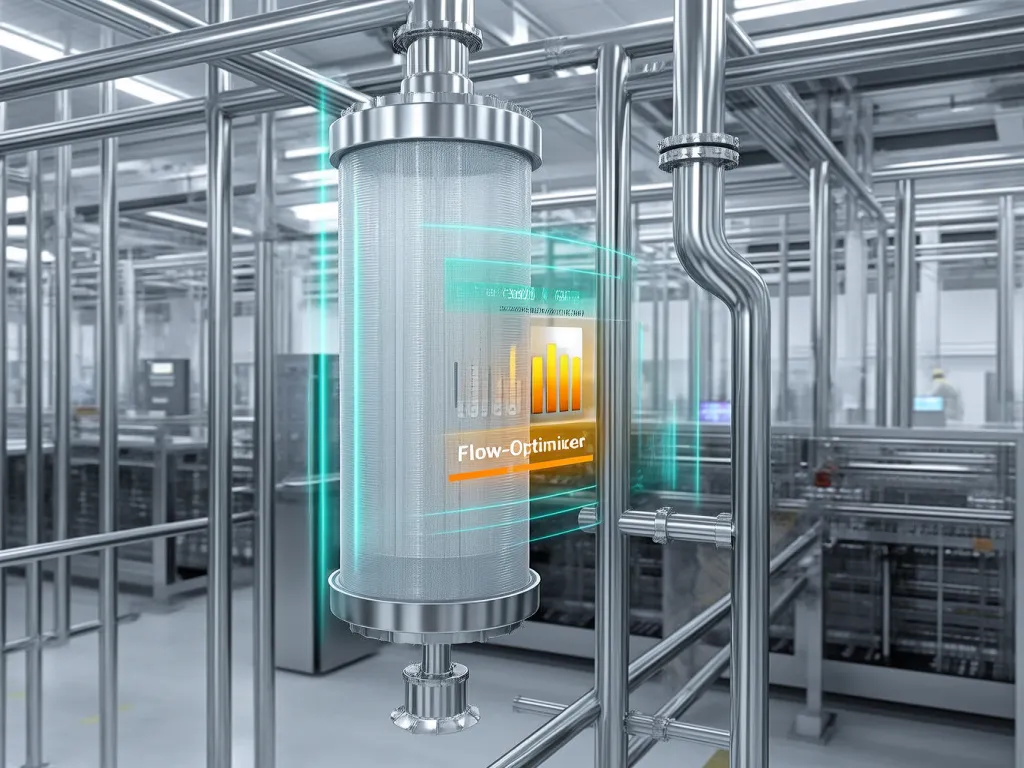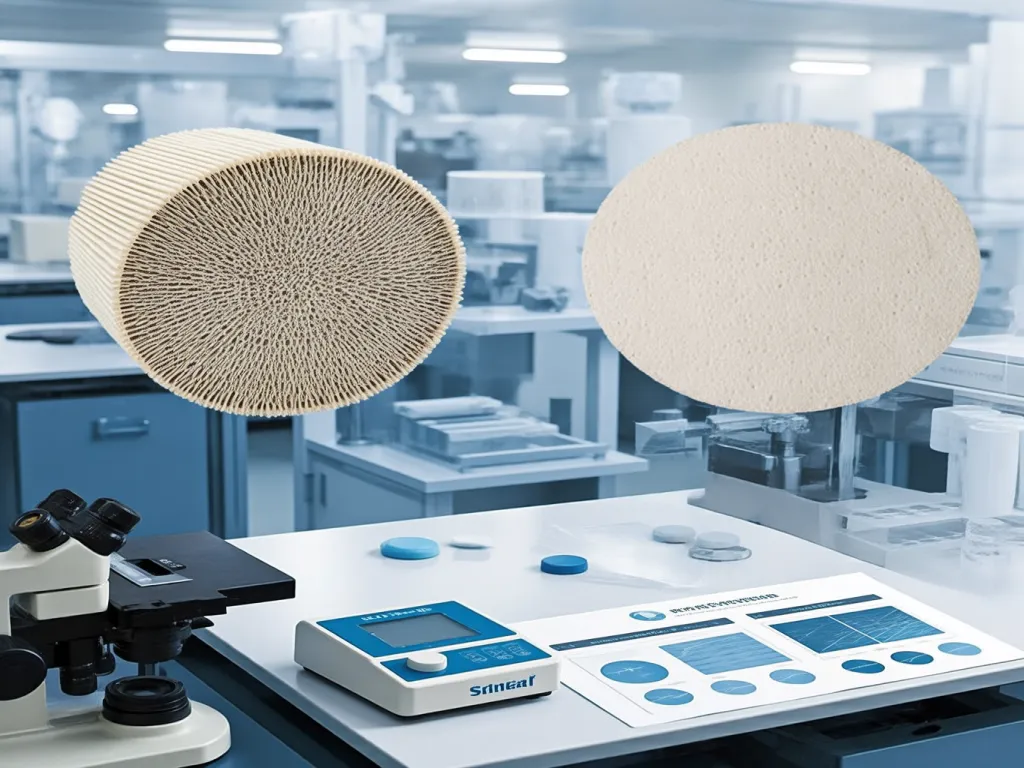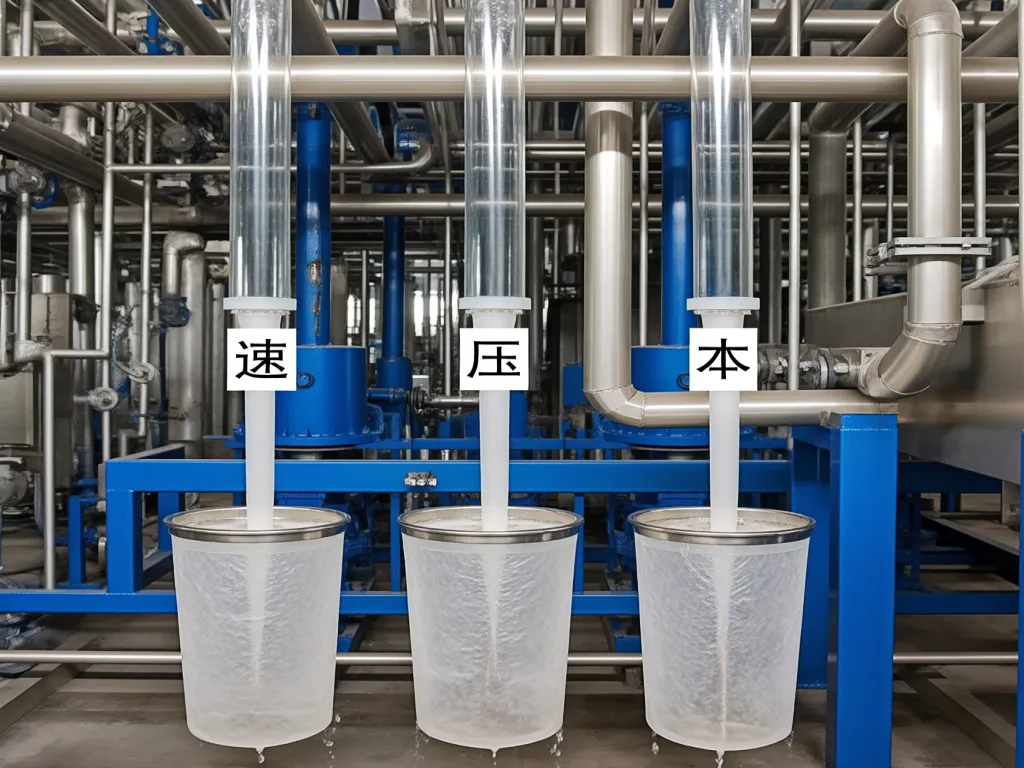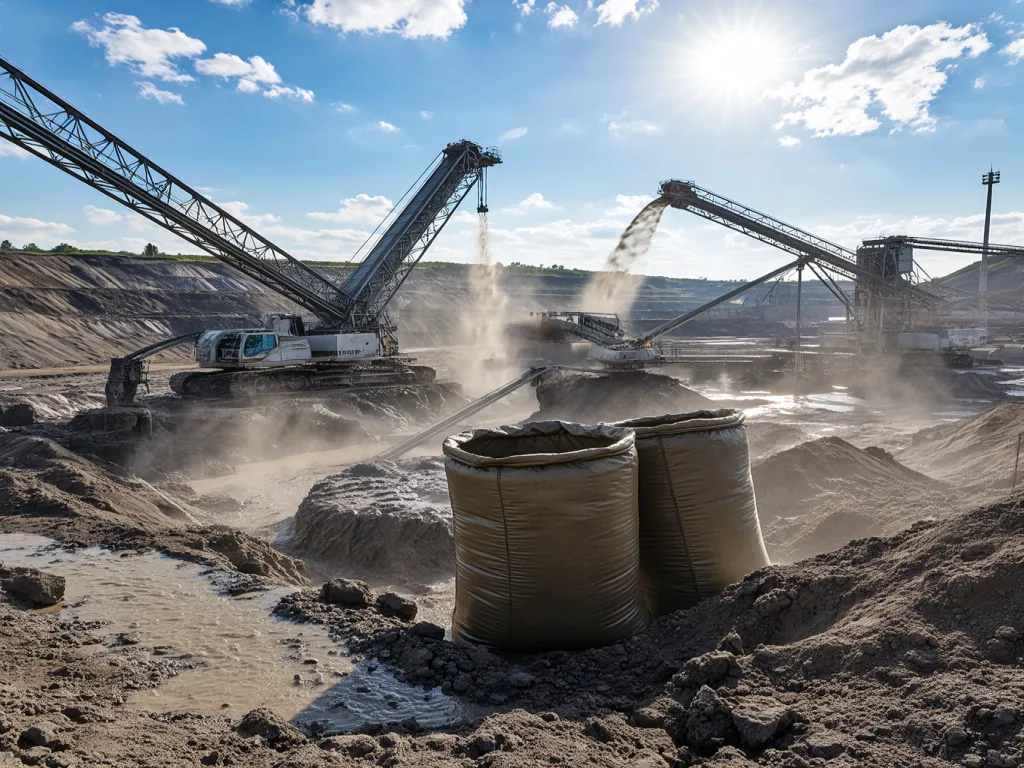Flow-Driven Precision: Filter Bags for Dewatering Processes

In industrial dewatering, the difference between smooth operations and costly bottlenecks often hinges on one overlooked detail: filter bags. Whether you’re managing a trickle of slurry or a torrent of wastewater, choosing the right filter bags for dewatering processes isn’t just about catching solids—it’s about matching flow rates to performance. Ever wondered how a simple bag could revolutionize your dehydration efficiency? Let’s dive into the science of flow-specific filtration.

Filter Bag Selection for Low-Flow Dewatering: Why Material Fineness and Filtration Precision Matter
When it comes to low-flow dewatering processes, the stakes are high, but the volume is low. This might sound counterintuitive—after all, less liquid to process should mean fewer headaches, right? Wrong. In low-flow scenarios, every drop counts, and the efficiency of your filtration system hinges on two critical factors: material fineness and filtration precision. Let’s break down why these elements are non-negotiable for small-scale dewatering operations.
First, let’s talk about material fineness. Imagine trying to strain fine silt through a coarse mesh—most of it slips through, leaving you with murky results. The same principle applies to filter bags. In low-flow applications, where the liquid volume is minimal but the suspended solids are often microscopic, a filter bag with a coarse weave or low-density material simply won’t cut it. You need a material that’s finely woven, with a tight pore structure to capture even the tiniest particles. Polyester, polypropylene, and nylon are popular choices, but not all variants are created equal. Look for filter bags made from high-grade, monofilament fabrics. These materials offer consistent pore sizes, reducing the risk of bypass and ensuring a cleaner filtrate.
Now, onto filtration precision. Precision here refers to the filter bag’s ability to maintain a specific particle retention rate. In low-flow systems, where the pressure differential is lower compared to high-flow setups, achieving the right balance between flow rate and particle capture is tricky. A bag with overly tight filtration might clog quickly, halting the process. Conversely, a loose filter lets too much solids through, compromising the quality of your dewatered product. The sweet spot? A filter bag engineered for low-flow conditions, with a micron rating that aligns with your target particle size. For instance, if you’re processing sludge with particles averaging 5 microns, a 1-micron bag might be too restrictive, while a 10-micron bag could let too much pass. Aim for a 3-5 micron range—tight enough to trap most solids but loose enough to sustain flow.
But why does this matter so much in low-flow scenarios? Because inefficiency here has a disproportionate impact. A clogged filter in a high-flow system might slow things down, but in a low-flow setup, it can bring operations to a grinding halt. Moreover, the cost of replacing or cleaning filters is higher relative to the volume processed, making durability and longevity key. A finely woven, precision-rated filter bag reduces downtime, minimizes waste, and ensures consistent output quality—all critical for small-scale operations where margins are tight.
Let’s also address the elephant in the room: cost. It’s tempting to opt for cheaper, lower-quality filter bags, especially when processing small volumes. But here’s the catch—cheap filters often mean frequent replacements, higher labor costs for maintenance, and potential damage to downstream equipment from unfiltered solids. Investing in a premium filter bag tailored for low-flow dewatering pays off in the long run. Think of it as insurance against inefficiency, downtime, and quality issues.
So, how do you choose the right filter bag for your low-flow dewatering needs? Start by analyzing your feed material. What’s the average particle size? What’s the viscosity of the liquid? Are there any abrasive or corrosive components? Next, consider your desired output quality. How clean does the filtrate need to be? Finally, factor in operational constraints like pressure, temperature, and chemical compatibility. A reputable supplier can help you navigate these variables, offering custom solutions that balance performance and cost.
In summary, low-flow dewatering isn’t about processing less—it’s about processing smarter. By prioritizing material fineness and filtration precision, you can achieve cleaner results, reduce operational headaches, and maximize the value of every drop processed. After all, in the world of industrial filtration, sometimes less truly is more.

Balancing Speed, Pressure Resistance, and Cost in High-Flow Dewatering
When it comes to high-flow dewatering environments, the stakes are higher—literally. The volume of liquid being processed per minute can put immense pressure on your filtration system, and choosing the right filter bags for dewatering processes becomes critical. So, how do you strike the perfect balance between filtration speed, pressure resistance, and cost efficiency? Let’s dive in.
First off, filtration speed is a non-negotiable factor in high-flow scenarios. You need filter bags that can handle rapid liquid influx without clogging or compromising performance. But speed alone isn’t enough. These bags must also withstand the mechanical stress of high-pressure environments. Think of it like a race car—it needs to go fast, but it also needs a robust chassis to handle the speed.
Now, let’s talk about pressure resistance. In high-flow dewatering, the liquid isn’t just flowing; it’s often being pushed through under significant pressure. This means your filter bags need to be constructed from materials that can endure this force without tearing or degrading. Polyester, polypropylene, and nylon are popular choices here, but the exact material depends on the specifics of your operation, such as the type of liquid being filtered and the presence of any abrasive particles.
But here’s the kicker: high-performance materials often come with a higher price tag. So, how do you keep costs in check without sacrificing quality? The answer lies in customization and optimization. Instead of opting for off-the-shelf solutions, work with a supplier who can tailor filter bags to your exact needs. This might mean adjusting the thickness of the material, the weave pattern, or even the shape of the bag to maximize efficiency and durability while minimizing waste.
For example, if your dewatering process involves liquids with low levels of solids, you might not need the heaviest-duty filter bags. A slightly thinner material with a tighter weave could provide sufficient filtration without the added cost. On the flip side, if you’re dealing with highly abrasive slurries, investing in reinforced bags with extra layers of protection could save you money in the long run by reducing downtime and replacement costs.
Cost efficiency also extends beyond the initial purchase price. Consider the total cost of ownership, which includes factors like maintenance, replacement frequency, and energy consumption. A cheaper bag that clogs frequently and requires constant cleaning might end up costing you more over time than a slightly pricier option that runs smoothly with minimal intervention.
So, what’s the takeaway here? In high-flow dewatering environments, the key is to find filter bags that offer the right combination of speed, pressure resistance, and cost efficiency. This requires a deep understanding of your specific process requirements and a willingness to invest in customized solutions. By doing so, you can ensure that your dewatering operations run smoothly, efficiently, and cost-effectively, even under the most demanding conditions.

Case Study: Successful Filter Bag Solutions for High-Flow Dewatering Systems
Let’s dive into a real-world scenario where selecting the right filter bags for dewatering processes made all the difference. Imagine a large-scale mining operation, processing thousands of gallons of slurry per hour. The challenge? Finding filter bags that could handle the immense flow rate without compromising on filtration efficiency or durability. The solution came in the form of custom-engineered filter bags, specifically designed for high-flow dewatering applications. These weren’t your run-of-the-mill filter bags; they were crafted with a blend of advanced materials and innovative design features to meet the unique demands of the mining site. One of the key design characteristics was the use of a multi-layered filtration media. This setup allowed for a higher surface area for filtration, ensuring that even at peak flow rates, the filter bags could effectively separate solids from liquids. The outer layers were made of a robust, abrasion-resistant fabric, capable of withstanding the harsh conditions of the mining environment. But what really set these filter bags apart were their internal support structures. Unlike traditional designs, these bags incorporated reinforced seams and a skeletal framework that distributed pressure evenly across the surface. This not only enhanced the filter bags’ structural integrity but also minimized the risk of premature failure, a common issue in high-stress dewatering applications. Performance-wise, the results were nothing short of impressive. The mining operation reported a significant increase in filtration efficiency, with solids capture rates exceeding 95%. Moreover, the lifespan of the filter bags doubled compared to previous models, leading to substantial cost savings over time. But don’t just take our word for it. Let’s break down the specifics. The custom filter bags boasted a flow rate capacity of up to 500 gallons per minute, a figure that far surpassed the site’s average processing needs. This meant that even during peak production periods, the filter bags could keep up without any drop in performance. And what about maintenance? Here’s where the real beauty of these filter bags shone through. Thanks to their self-cleaning design, which incorporated periodic backflushing cycles, the need for manual cleaning was drastically reduced. This not only saved time but also minimized downtime, ensuring that the dewatering process ran smoothly around the clock. Now, you might be wondering, “Can such a solution really be tailored to my specific needs?” The answer is a resounding yes. Whether you’re dealing with a high-flow mining operation or a lower-volume industrial process, the principles of customization remain the same. It’s all about understanding your unique flow rate requirements, the nature of the solids you’re dealing with, and the environmental conditions of your site. So, if you’re tired of settling for one-size-fits-all solutions that don’t quite hit the mark, it’s time to explore the world of custom filter bags for dewatering processes. Trust us; your bottom line will thank you.
Material Innovation: The Backbone of High-Flow Filtration
At the heart of these custom filter bags lies a carefully selected blend of materials. The choice of fabric isn’t just about durability; it’s about achieving the perfect balance between permeability and filtration efficiency. For instance, in our mining case study, a combination of polyester and polypropylene was used. Polyester provided the necessary strength and chemical resistance, while polypropylene contributed to the bag’s filtration capabilities with its fine fiber structure. This material synergy ensured that the filter bags could handle the high flow rates without clogging, a common pitfall in many dewatering applications.
Structural Integrity: Reinventing the Filter Bag Framework
What good is a filter bag if it can’t hold its shape under pressure? That’s why the structural design of these custom bags was given equal importance. Reinforced seams, made possible through advanced welding techniques, ensured that the bags could withstand the mechanical stresses of high-flow dewatering. Additionally, an internal skeletal framework, often made of stainless steel or high-strength plastics, was incorporated to distribute pressure evenly. This not only prevented bag collapse but also extended the lifespan of the filter bags significantly.
Performance Metrics: Beyond Just Flow Rates
While flow rate capacity is a critical metric, it’s not the only one that matters. In our case study, the filter bags were also evaluated on their solids capture efficiency, pressure drop across the bag, and ease of maintenance. The multi-layered filtration media played a pivotal role here, allowing for high capture rates of even the finest particles. Meanwhile, the self-cleaning design, with its backflushing capabilities, minimized pressure buildup and ensured consistent performance over extended periods. These performance metrics, when combined, painted a comprehensive picture of the filter bags’ effectiveness in a high-flow dewatering environment.
Selecting the right filter bags for dewatering processes isn’t a one-size-fits-all decision—it’s a strategic move tailored to your flow rate, pressure demands, and cost goals. From low-flow precision to high-volume durability, the right bag transforms dewatering from a challenge into a competitive edge. Ready to upgrade your system? Start by assessing your flow needs, then explore custom solutions designed to maximize efficiency and minimize downtime. Your next breakthrough in dewatering performance begins with a single question: What’s your flow telling you?

